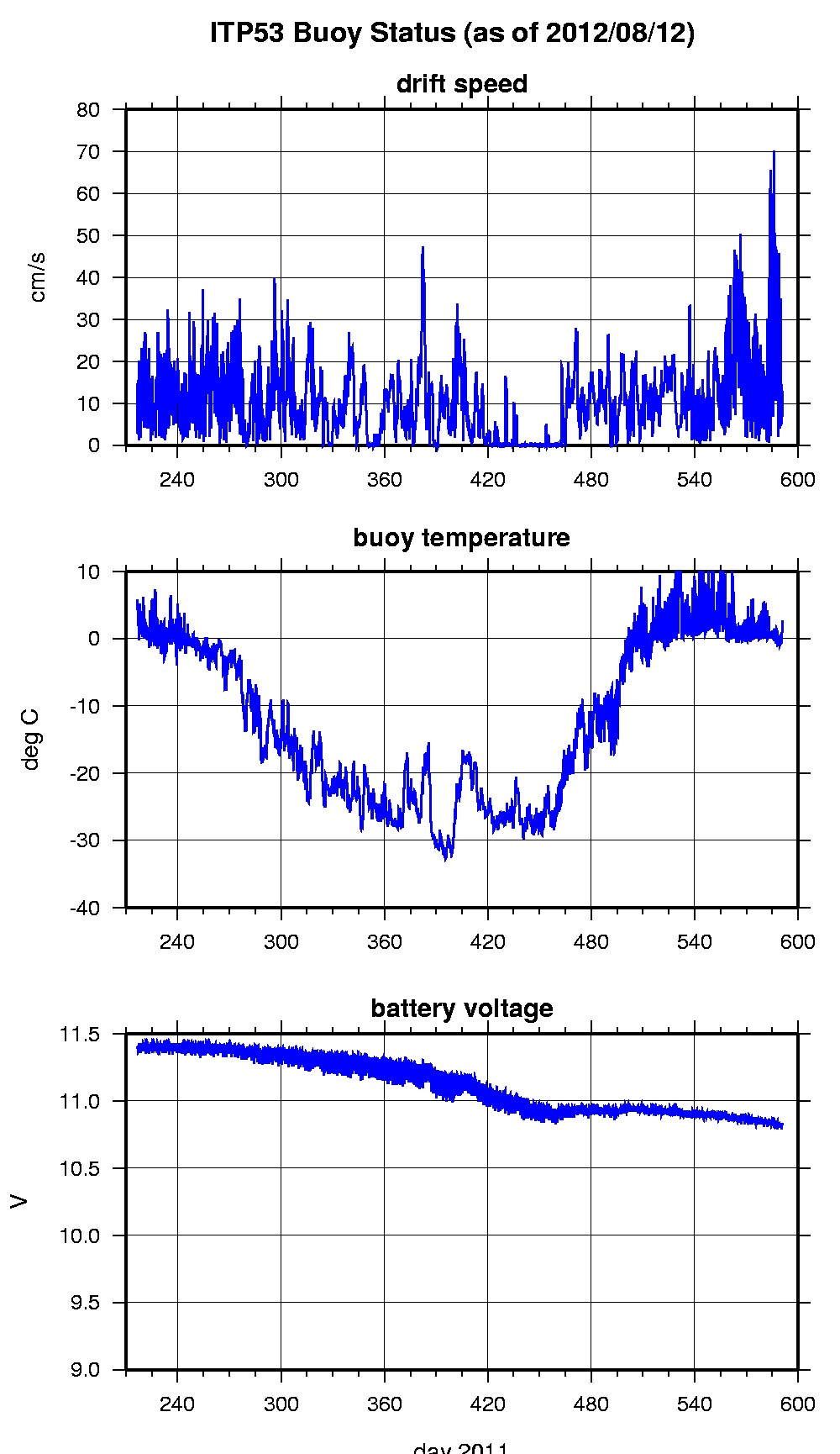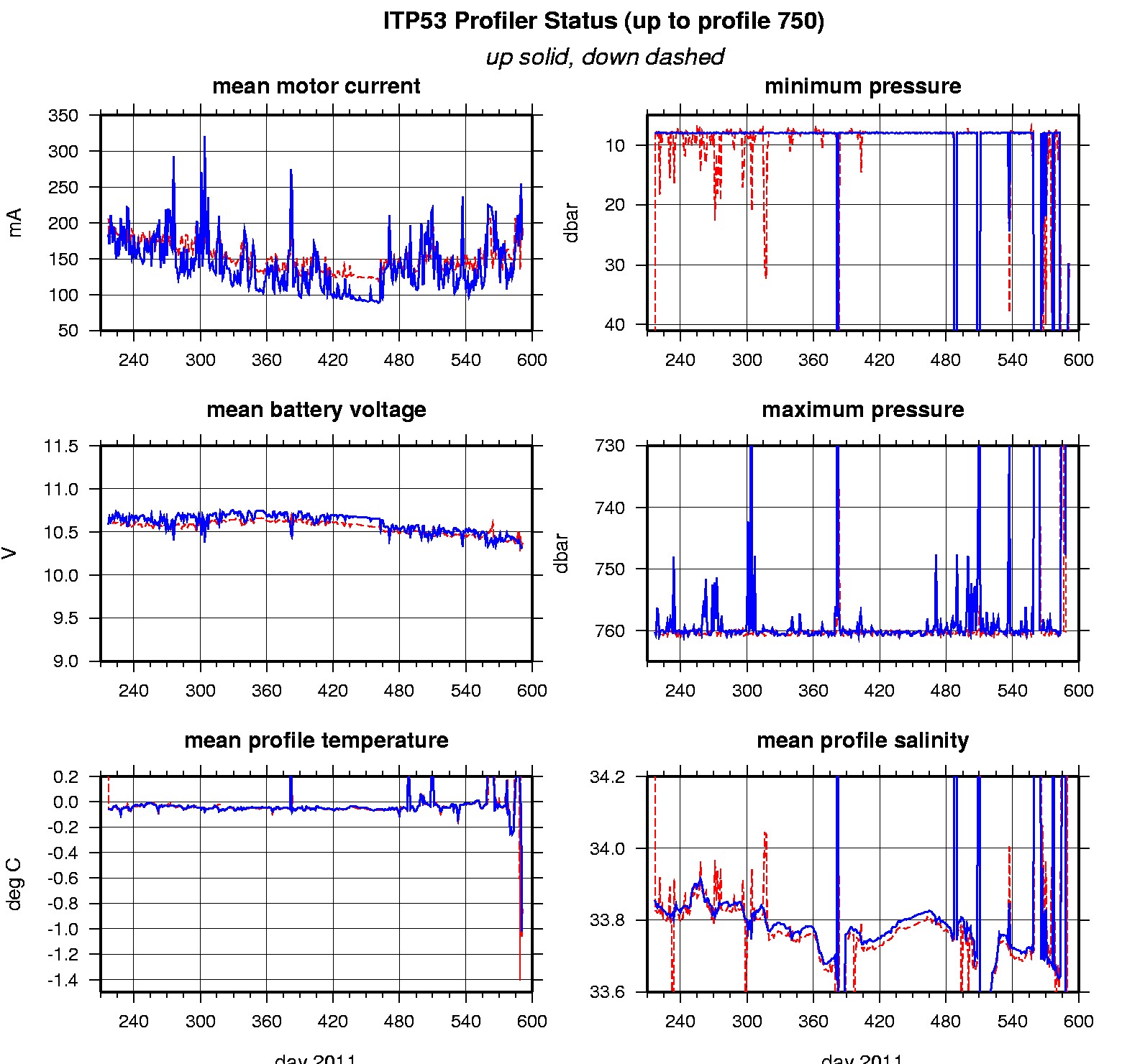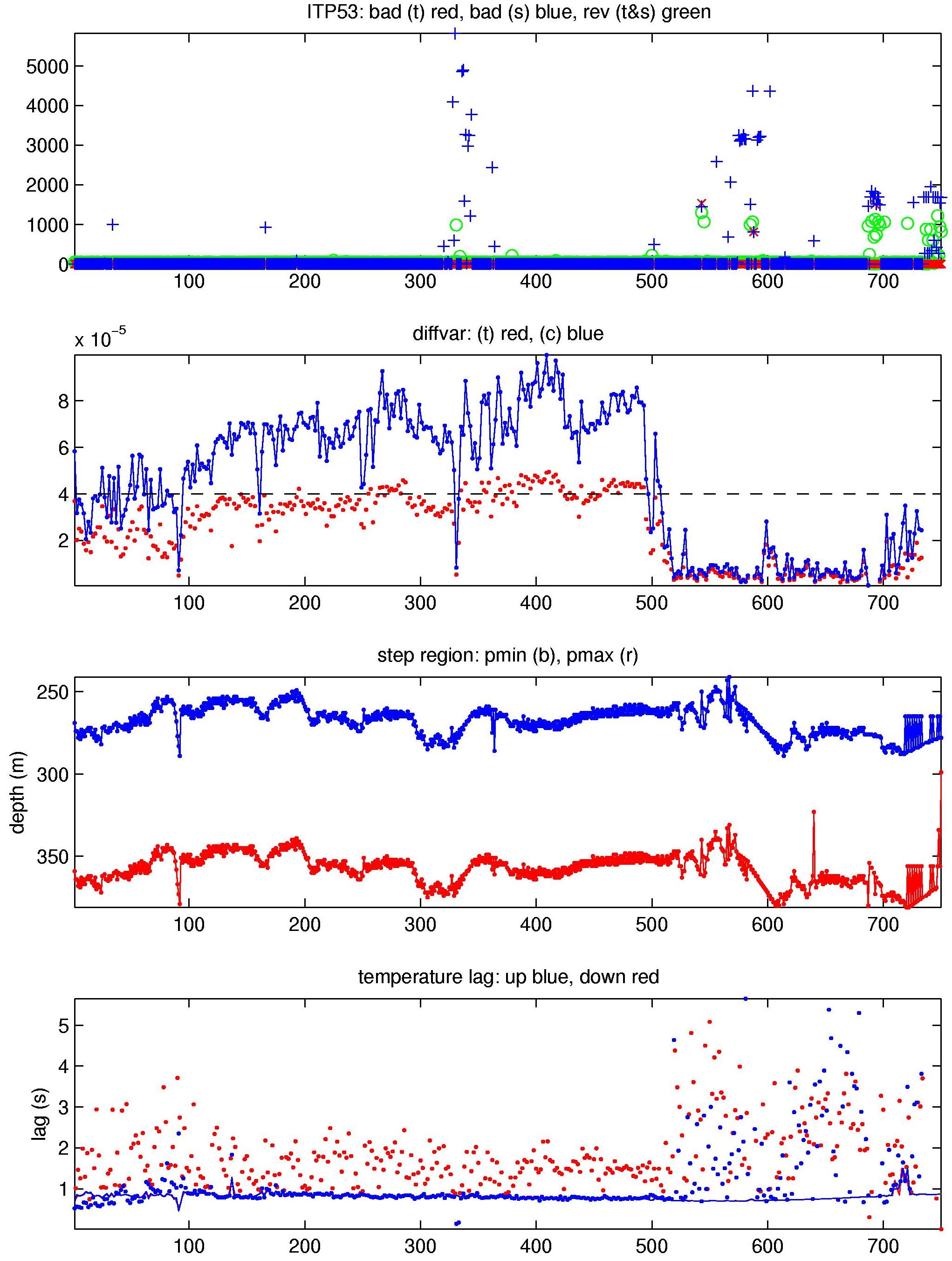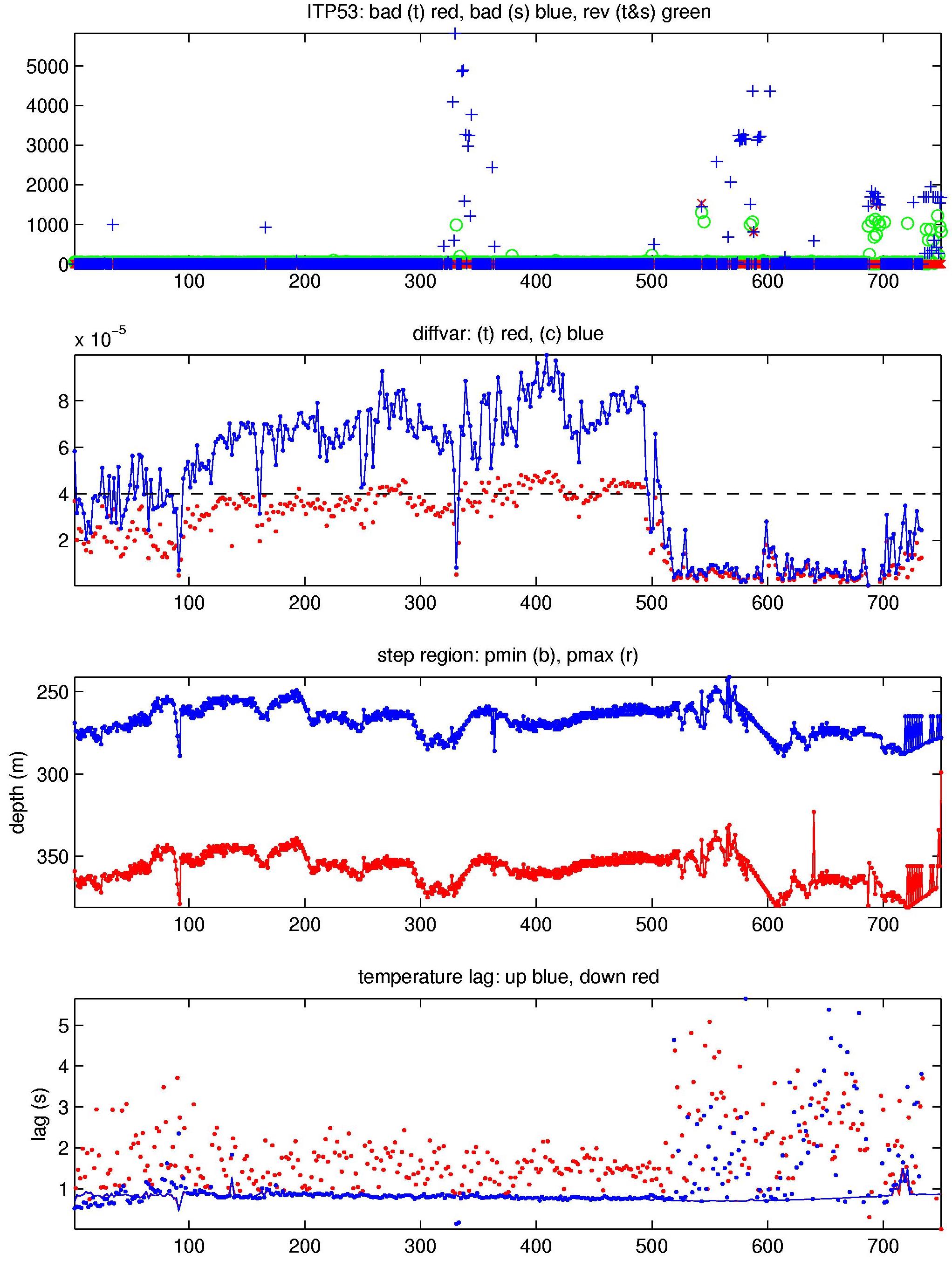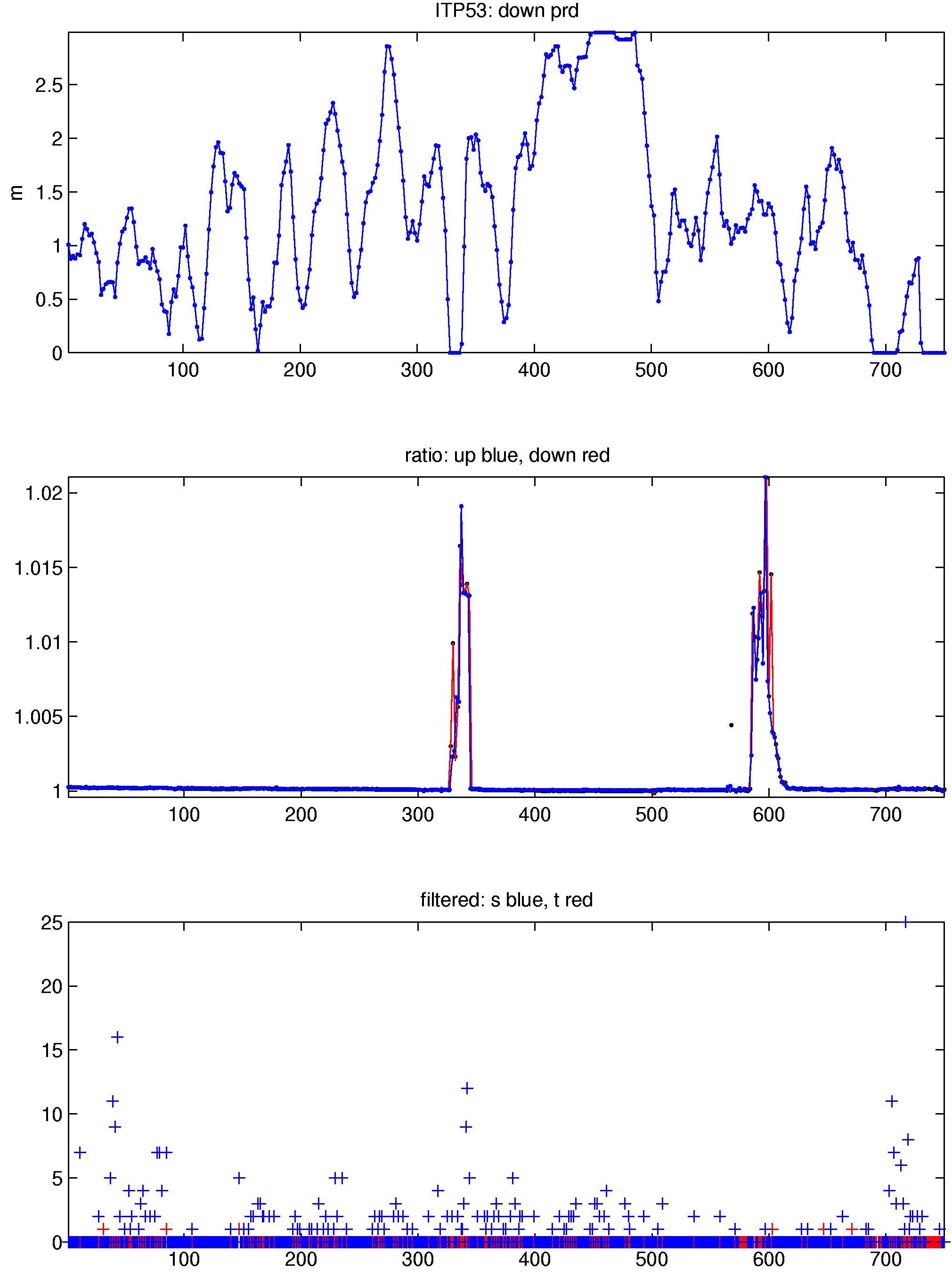ITP53 Data Processing
The 750 profiles that were transmitted from ITP53 were processed according to the procedures described in the ITP Updated Data Processing Procedures. The processing parameters for are shown in the figures to the right. Buoy drift speeds were almost always less than 30 cm/s until the last 40 days of the time series, so the profiler covered at least 700 m in nearly 95% of the profiles that it communicated to the surface package.
Thermohaline staircases were well defined for the first 500 profiles to generate initial estimates for CTD lag corrections. They were further tuned to reduce small spikes at the base of TS steps as well as to reduce the slight up/down hysteresis present for much of the record, but were overall within typical ranges, with little drift and typical variability. Two significant fouling events, centered around profiles 335 and 580 respectively, were addressed by editing a number of profiles or portions thereof as well as by an increase in the potential conductivity calibration correction (variable "rat").
See the Data Products tab to the left for descriptions of the three levels (I, II, III) of data processing and to access all data.
